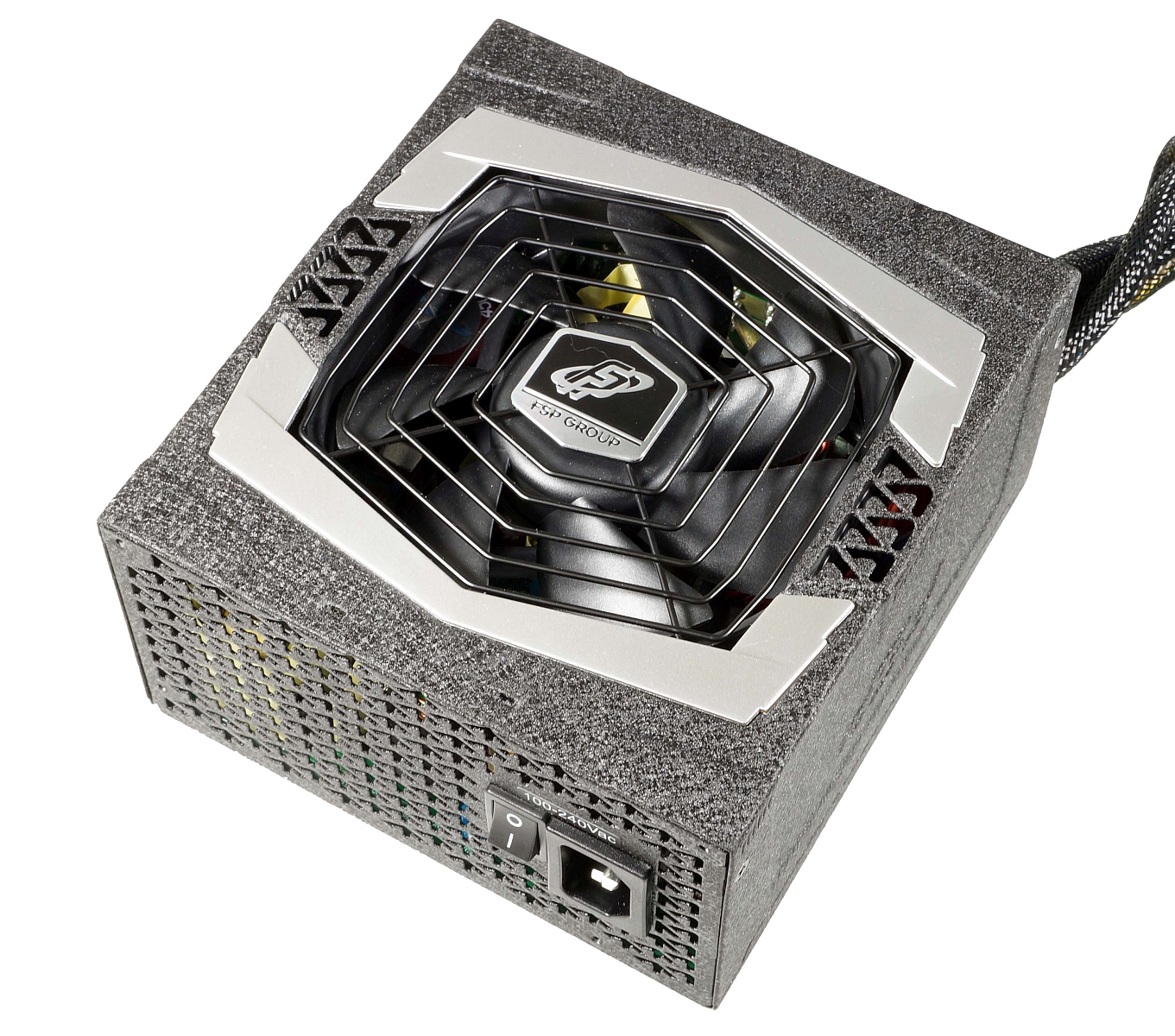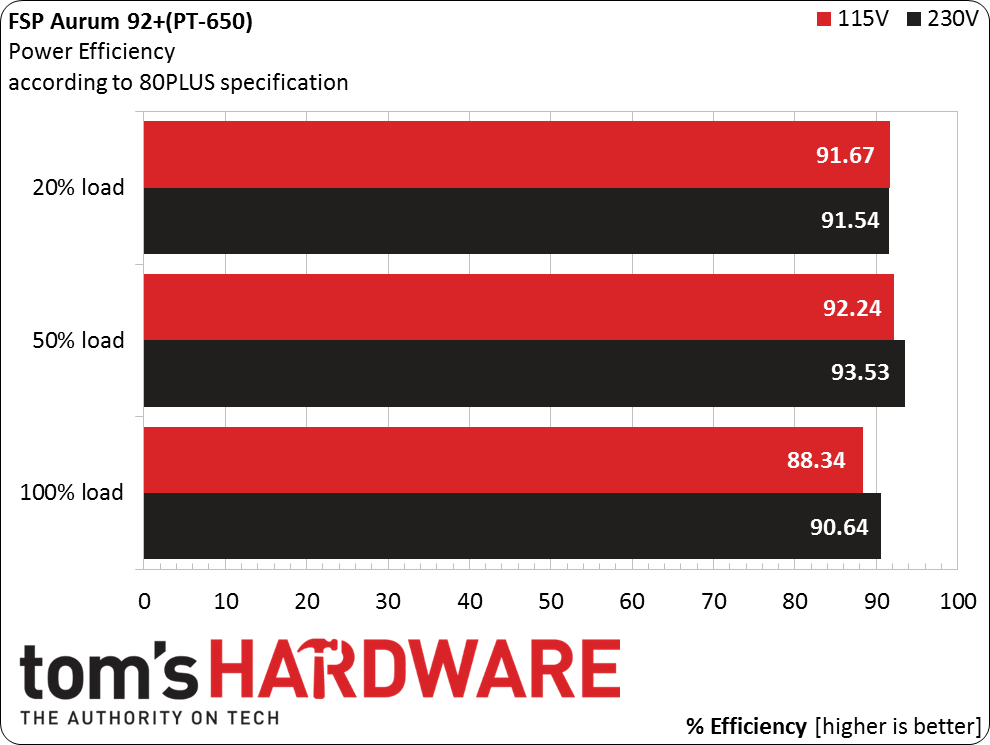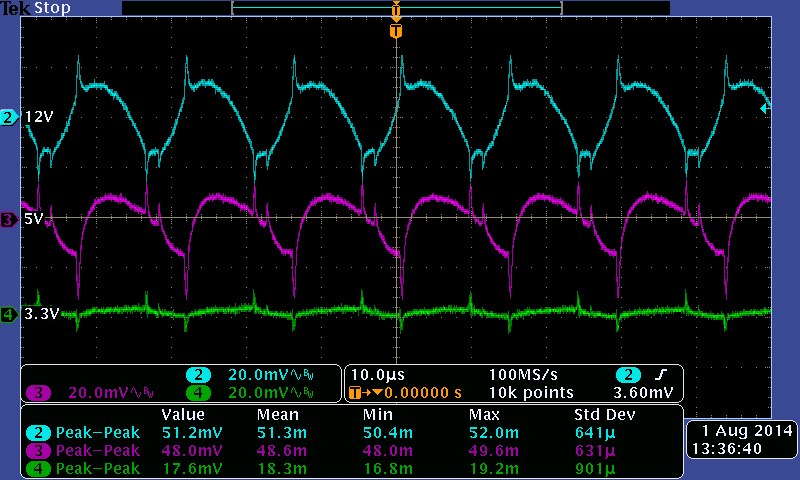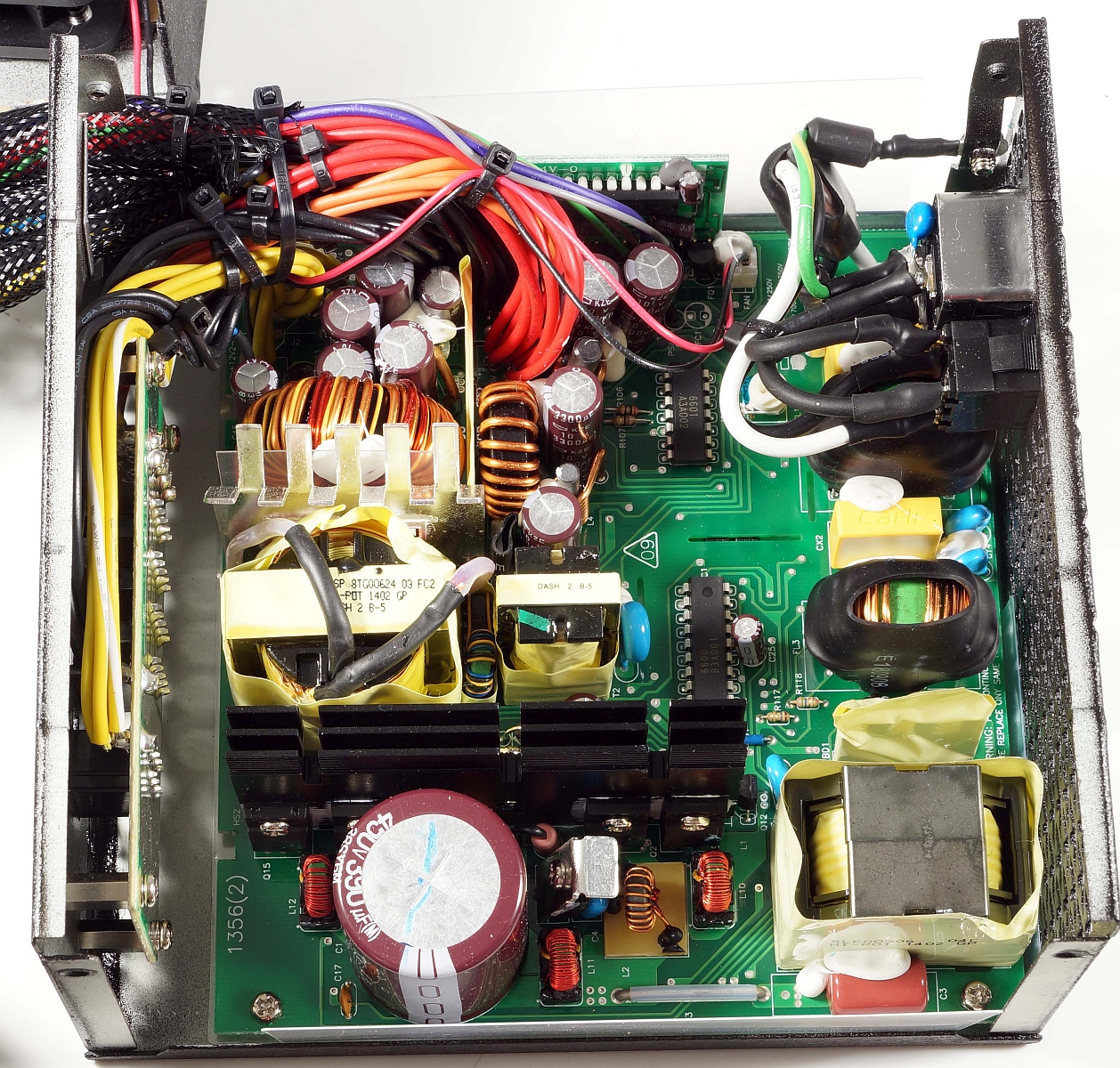Early Verdict
The FSP Aurum 92+ is high-quality, high-efficiency, low-power, semi-modular 650W PSU. While this power supply performs within its 80 Plus Platinum spec, the 12V rail's maximum power output is under 600W, and the rather loud fan runs continuously.
Pros
- +
Build Quality, Efficiency
Cons
- -
MAximum 12V Rail Power, Noise
Why you can trust Tom's Hardware
We haven't seen an FSP power supply in the lab for quite a while. It was a stroke of good luck, then, when the company sent in a high-efficiency product with a reasonable output level in time for a comparison against two similar competitors. We already published the first evaluation in Corsair HX750i 80 PLUS Platinum Power Supply Review, and that solution proved compelling. As fans of FSP's 80 PLUS Gold-rated Aurum models, we're interested to see how the Platinum-class Aurum sizes up.
Its enclosure differs in one small way from the Gold-class Aurum: the fan’s frame is not golden colored, but rather silver, hinting at the PSU's 80 PLUS Platinum rating. FSP's workmanship is otherwise perfect; the roughened finish gives the PSU an upscale look.
While the ATX, CPU and PCIe cables are all sleeved, round and fixed, the others are modular and flat. There exists an exception: one SATA cable is round, and for some reason its four connectors are only spaced 2” apart. The other SATA cable sports five connectors, which are spaced 6” apart. At first, that seems like an illogical discrepancy. But it actually makes a lot of sense. Regardless of whether you pick a large or small case, storage connectivity will be readily available. The cable lengths and number of connectors impressed us; for instance, there are four auxiliary PCIe outputs for a couple of high-end graphics cards.
FSP's solution employs four +12V rails, each of which is rated for 18A. The maximum combined load is 576W. That's not a lot for a 650W power supply, unfortunately.
| FSP Aurum 92+ (PT-650) | ||||||||
|---|---|---|---|---|---|---|---|---|
| AC Input | 100-240V, 50-60Hz | |||||||
| DC Output | +3.3V | +5V | +12V (#1) | +12V (#2) | +12V (#3) | +12V (#4) | -12V | +5Vsb |
| 20A | 18A | 18A | 18A | 18A | 18A | 0.3A | 3.0A | |
| Individual Output | Row 3 - Cell 1 | Row 3 - Cell 2 | Row 3 - Cell 3 | Row 3 - Cell 4 | Row 3 - Cell 5 | 6W | 15W | |
| Rail Utilization | Sys | Sys | CPU & VGA | |||||
| Combined Output | 125W | 576W | ||||||
| Total Continuous Output | 650W | |||||||
| Peak Output | N/A |
Efficiency According To The 80 PLUS Spec
Efficiency In Typical Use Cases
The 80 PLUS Platinum category sets a high bar for efficiency. And like Corsair's model, the FSP Aurum 92+ struggles somewhat. While it easily satisfies the specification’s requirements at 20 and 50% load, efficiency at 100% duty cycle is only 88.34% (instead of the required 90%). Similar to the Corsair review, though, we're letting this slide. A miss by 0.66% is not catastrophic, and so few of us peg our PSUs at 100% anyway. Lower loads are more common, and that's where the Aurum 92+ shines. At 50W, its efficiency is still a commendable 86.3%.
While the ripple and noise measurements comply with the specification, the scope’s display reveals more spikes than we'd like. In particular, ripple voltage on the 5V rail is quite high, though still less than the permitted 50mV.
Standby power draw is really low (less than 1.5W). And at 230V, the hold-up time is an excellent 25ms.
Get Tom's Hardware's best news and in-depth reviews, straight to your inbox.
Thanks to strong results in our testing suite, the Aurum 92+ looks like a winner. We're not fretting about the slight efficiency miss at full load. However, we're disappointed in this PSU’s sound level. Its fan is permanently on, and even with a 50W load it generates 34.5 dB(A). Although that doesn't go up much at 600W, FSP's PT-650 is simply not a good choice for a living room PC.
A Closer Look at the PCB
A look into the PSU’s enclosure reveals quite a bit of spare room that could have been used for cooling fins. Maybe this is why the Aurum 92+ doesn't have hybrid fan control. While the PT-650's circuit design does not reflect the industry's most recent improvements, its ACRF (Active Clamp Reset Forward) design is no slouch, partly thanks to the secondary side's synchronous rectifier. The two-stage input filter even sports a MOV – a first for FSP, as the Gold-rated Aurum models don’t sport MOVs. All capacitors are sourced from Nippon Chemi-Con in Japan. The soldering quality is excellent, but perhaps FSP could have added a few more heat-shrink tubes.
Conclusion
FSP's Aurum 92+ is the oldest and least powerful model in our ongoing three-way comparison. But this 650W PSU is not an underdog, and its excellent workmanship and well-rounded feature set are good indicators of why. Partially modular cabling is not a detriment; to the contrary, it actually helps improve efficiency. The Aurum 92+'s strength is most evident at low power levels. Of course, that's aided by a relatively low maximum output.
So, what are its weaknesses? We don't like the low maximum power on the +12V rails, nor do we enjoy the PSU’s fan that runs continuously (and not altogether quietly). If you don't find yourself needing all of this supply's output (or a quiet fan), the Aurum 92+ could be a viable option. Just be aware that its warranty period is five years.
-
dish_moose Letting ratings that are not met "slide" is not acceptable. It either meets all requirements or it's not Platinum. A fan that runs continuously and noisy as well? I'm NOT putting this supply on my list of PSUs I would recommend or would like to own.Reply
-Bruce -
Wolfwerx "...efficiency at 100% duty cycle is only 88.34% (instead of the required 90%). Similar to the Corsair review, though, we're letting this slide. A miss by 0.66% ..."Reply
Please check your math. -
InvalidError Reply
I see no link to test methodology here. If you have 0.1% accuracy on voltage measurements and 0.3% on current for both the input and outputs, you already have a 0.8% uncertainty directly from your measurement equipment. Then you have the test setup errors: if you use leads between the PSU's cables and your electronic loads and make voltage measurements at the load, you fail to account for wiring losses - you need electronic loads with remote sense to make voltage measurements at the PSU's cables instead of the load's terminals. This can throw measurements off by a considerable amount at high currents - such as when testing a PSU at 100% load.15011643 said:Letting ratings that are not met "slide" is not acceptable. It either meets all requirements or it's not Platinum.
There is also the possibility that line input voltage, ambient temperature and other parameters may not have been at exactly 80+ test spec, all of which can easily account for the bulk of a 0.66% miss.
Unless the measurement equipment and methodology are more accurate than 0.5%, 0.66% is well within measurement error margins.
Edit: oops, that was supposed to be 1.66%. In any case, the potential for measurement errors can easily be that bad too.
-
dish_moose InvalidError makes some very good points. Methodology, proper equipment (Calibrated with certificates), and controlled environment all are key to to any type of testing.Reply
-Bruce
Garbage in - garbage out! -
oczdude8 only 575W available on 12V rails? That's very suspicious.... Seems to me like poor design.Reply -
InvalidError Reply
That's only 75W for 3.3V, 5V, 5VSB and -12V combined. All your USB ports are powered by the 5V rail, so you want at 5A or so there just for that. Many GPUs draw 10-25W from the 3.3V rail for bus and memory voltage regulation, so that's another 5-10A there. The motherboard, SSD, HDD, add-in boards, miscellaneous support circuitry, etc. also draw from 3.3V and 5V.15025721 said:only 575W available on 12V rails? That's very suspicious.... Seems to me like poor design.
I think 75W is a relatively fair amount of power budget to set aside for secondary rails in a group-regulated PSU. It "looks suspicious" only because the bulk of 80+ Gold or better PSUs use DC-DC converters for the other rails. Fortron managing Platinum (albeit just barely, after considering unknown equipment and test uncertainty) with a group-regulated design means more affordable high-efficiency PSUs might be on their way. -
oczdude8 Reply15030082 said:
That's only 75W for 3.3V, 5V, 5VSB and -12V combined. All your USB ports are powered by the 5V rail, so you want at 5A or so there just for that. Many GPUs draw 10-25W from the 3.3V rail for bus and memory voltage regulation, so that's another 5-10A there. The motherboard, SSD, HDD, add-in boards, miscellaneous support circuitry, etc. also draw from 3.3V and 5V.15025721 said:only 575W available on 12V rails? That's very suspicious.... Seems to me like poor design.
I think 75W is a relatively fair amount of power budget to set aside for secondary rails in a group-regulated PSU. It "looks suspicious" only because the bulk of 80+ Gold or better PSUs use DC-DC converters for the other rails. Fortron managing Platinum (albeit just barely, after considering unknown equipment and test uncertainty) with a group-regulated design means more affordable high-efficiency PSUs might be on their way.
That's the thing. That's not very good design, which is further complemented by the loud fan.
Now If they do sell it at a good price, then that would be great, but I have a feeling that they will be selling this at a premium (close to any other platinum PSU) just because it is a platinum rated PSU.
-
InvalidError Reply
There is nothing inherently wrong with group-regulated PSUs aside from generally worse cross-loading performance. Unfortunately, this review omits any sort of cross-loading and output voltage regulation tests, so there is no data to comment on how well FSP's group-regulated design fared here. In today's 12V-centric builds though, extreme cross-loading from the minor rails would be extremely uncommon so, unless FSP screwed up, I would expect the PSU to still be decent under typical use.15030427 said:That's the thing. That's not very good design -
oczdude8 Reply15030551 said:
There is nothing inherently wrong with group-regulated PSUs aside from generally worse cross-loading performance. Unfortunately, this review omits any sort of cross-loading and output voltage regulation tests, so there is no data to comment on how well FSP's group-regulated design fared here. In today's 12V-centric builds though, extreme cross-loading from the minor rails would be extremely uncommon so, unless FSP screwed up, I would expect the PSU to still be decent under typical use.15030427 said:That's the thing. That's not very good design
Yes that's true. Crossloading is not too big of an issue these days, and actually I just realized this PSU was made in 2012.... Now it makes sense why it would be designed as such. I just knew there would be no way a recently made PSU would employ this design.
-
youssef 2010 There are a lot of questionable things in this PSU. Some things about it feel rushed.Reply






